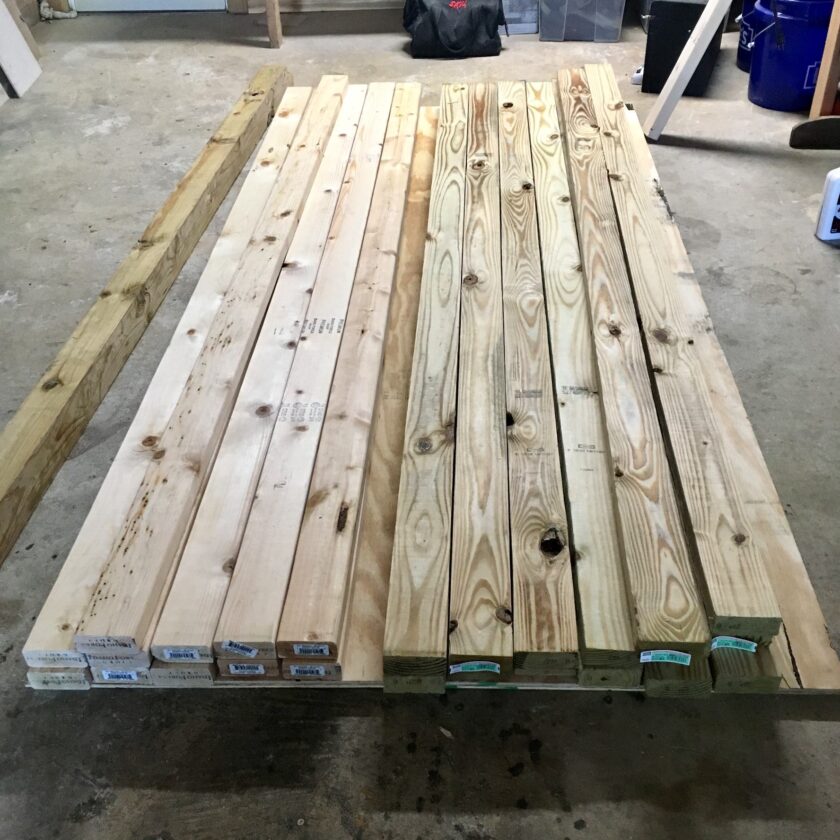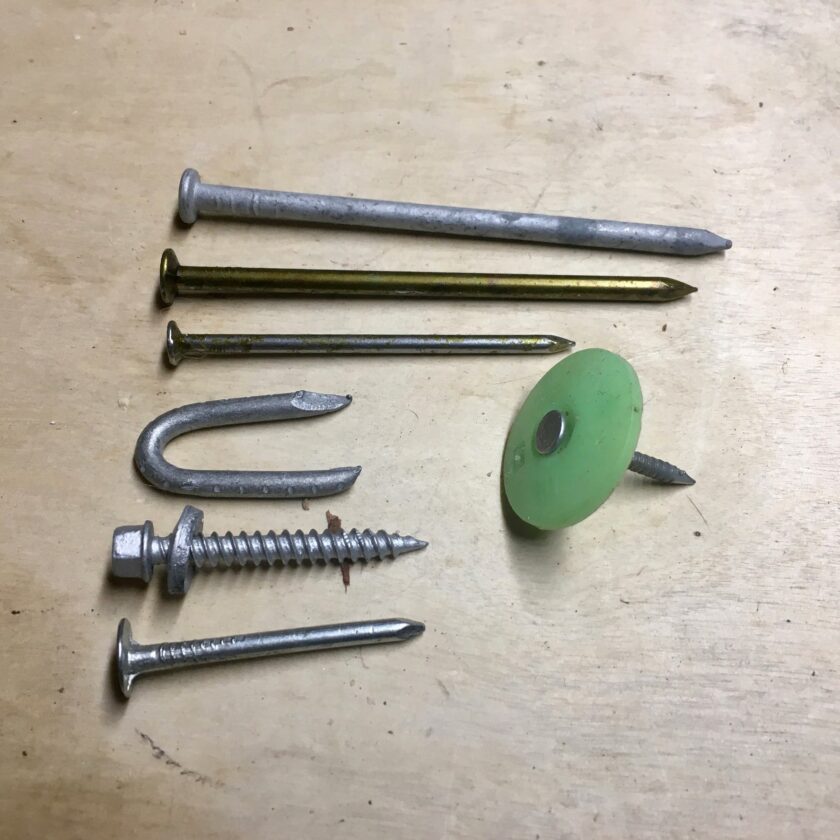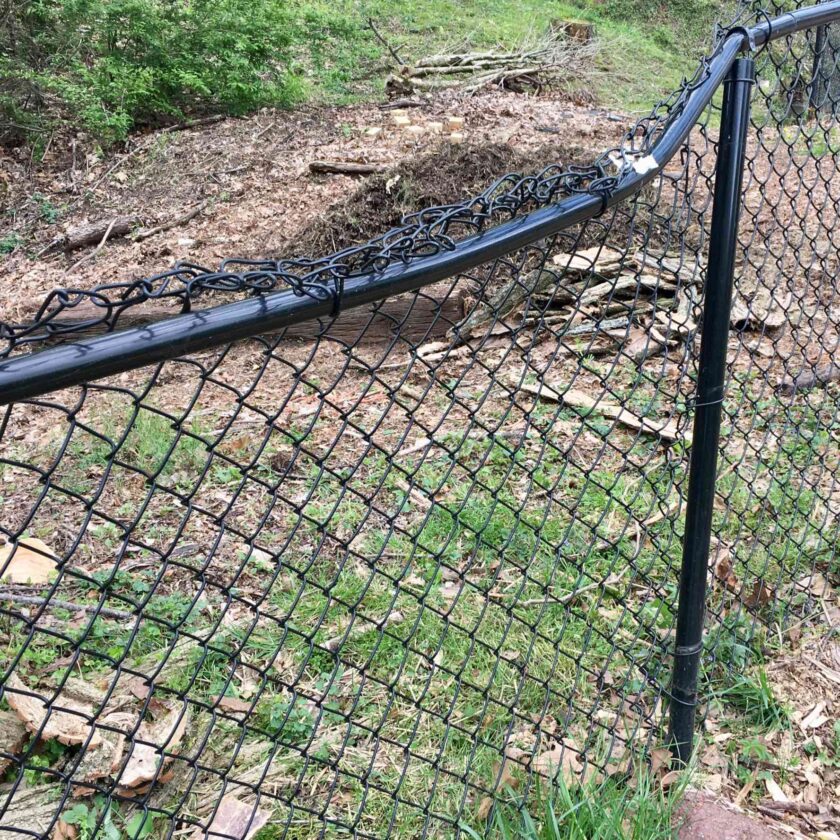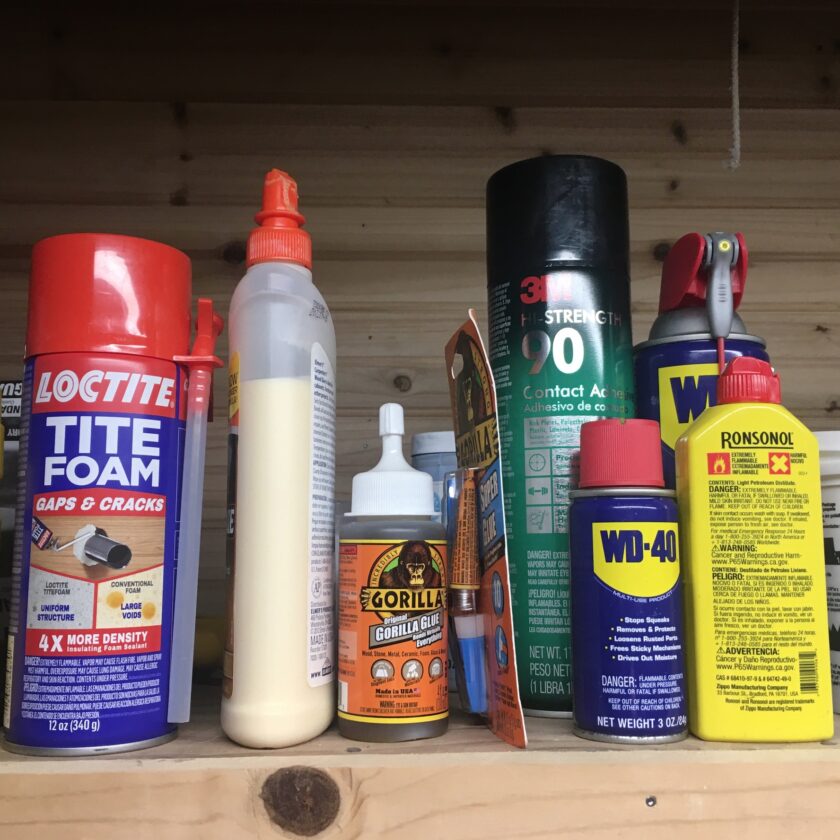The vast, overwhelming majority of preparedness articles focus on the basics: food, water, shelter, defense, first aid, etc. These articles are sorely needed (and I may duplicate them myself one day) but articles going beyond the basics are few and far between. This week I’m taking a break from gun stuff and talking about a “beyond basic” preparedness category that is often overlooked: building material.
This article contains affiliate links.
Background and Concept
The one time I have been to Home Depot in the past month was an absolute shit-show. From what friends have told me recently Home Depot has actually gotten worse. Our state is on “lockdown” and home improvement stores are one of the few places people can go. So instead of going and getting their crap and getting out, the store is packed with people browsing the aisles and generally treating it as a day of leisure.
I’m doing my best to avoid crowds. I like an occasional concert or whatnot, but fighting crowds in a store is not for me. So, when I had to go to Home Depot for a project I’m working on I instantly realized I had screwed up. I didn’t need a bunch of exotic items – just some basic building material. I wondered why I didn’t already have this stuff on hand. Further, I wondered why I’ve never read a prepping article that advised having building material on hand (in fairness, maybe I have but I don’t remember it).
There are very few emergencies that would force me to vacate my home. You probably feel the same. If you own your home you should be prepared to keep it in good condition should the day come when you can’t call someone else to do it for you. If you have a farm or hobby farm you should also be prepared to maintain your outbuildings, sheds, stalls, fences and other structures.
Here’s my list. I am by no means perfect. The list below is, largely, an aspirational list because I just thought of this recently, and for financial reasons (I will absolutely do this, though). Also keep in mind that I’m not a professional carpenter or anything like that – just an average dude. I’m sure this list is incomplete but it should get you started thinking about some things.
Lumber & Plywood
I would have some dimension lumber on hand. The exact amounts will vary according to your needs. I would have some combination of treated and untreated lumber. I would use treated lumber for (at least some) outdoor applications to avoid having to replace it every couple of years (I would avoid using treated lumber in certain instances, like direct contact with soil for growing food crops). For dimensions larger than 2×4, I like to have some longer pieces of lumber. They can always be cut down, and they can always (assuming I have electricity) be ripped down to make 2x4s. My ideal lumber pile looks something like this:
- 8x – 2 x 4 x 8, untreated
- 4x – 2 x 10 x 12, untreated
- 8x – 2 x 4 x 8′, treated
- 4x – 2 x 10 x 12, treated
- 4x – 4 x 4 x 12, treated
I would also have some plywood on hand. Should you need to board up your windows, you have it (let me offer an alternative to boarding up windows a little further down). Should section of roof blow off – or a tree limb go through it – you have a way to repair it. There are a dozen and one other reasons to have some plywood on hand. All quantities listed below refer to 4×8 sheets.
- 2x – 1/2″ OSB
- 2x – 3/4″ OSB
- 2x – 1/2″ treated exterior sheathing

Fasteners
Though I use a ton of screws, I favor nails for my preparedness stuff. I can always drive a nail with a hammer, but it’s awful hard to put a screw in without electricity. Some of you may have battery operated tools and if so, and if you prefer screws, get screws. Here’s what I keep on hand.
- 16D coated sinker nail, 5 pounds
- 8D coated sinker nail, 5 pounds
- 16D galvanized nail, 5 pounds. Galvanized nails are for use with treated lumber, and for outdoor applications.
- 1 1/4″ galvanized fence staple, 5 pounds
- Roofing screws
- Roofing nails

Consider what you do and what you might need to do. The large, 16D nails are for framing and nailing pieces of dimension lumber together. The smaller 8D nail is for attaching plywood to dimension lumber. If you don’t have a fence you probably don’t need fencing staples. If your roof has shingles you will probably need some of both kinds of roofing nails shown. This small assortment of nails will do many of the projects you will need to do.
Other Materials
There are a host of other materials you may wish to consider. These will be somewhat dependent on the construction of your home and outbuildings.
Exterior Repair: the list below are things needed to maintain the integrity of the skin of your home should it suffer storm damage.
- 2x packs of shingles and 1 roll of tar paper (underlayment for shingles)
- 1 piece metal roofing material
- Spare pieces of siding
- Paint and paint brushes
- Screen (to repair window and door screens)
- Extra lengths of gutter
Fencing Material: If you have fences, you probably have them for a reason. A small tree came down on my fence just a couple of weeks ago. The type of material you need will depend on the type of fence you have. Here are some things to consider:
- T-posts (if you have a T-post fence)
- Fence fabric (for all the types of fence you have)
- Top rails, posts, and various connectors (if you have a chain link fence)

Hardware Cloth: Hardware cloth is sort of the “bandana” of the fence world. You can use it for all sorts of stuff. I built my chicken run with galvanized hardware cloth (rather than chicken wire) because it’s stronger and safer for the chickens. It’s also really, really handy stuff to have on hand for a variety of purposes. One of my favorites is adding some emergency security to your windows. A lot of people talk about boarding up windows. That’s cool if you’re evacuating, but if you’re staying put, think about it living in a house with the windows covered by wood.
Boarding up makes the house super dark and requires lighting 24 hours a day. If you don’t have electricity and you’re using candles or lamps, that increases your fire hazard about a million-fold. If you can’t open the windows your house is going to be insanely hot in the summertime. Boarding up your windows definitely has some advantages: obvious security and it may make it less obvious you are home. I think those are outweighed by the huge compromises in livability.
Instead of plywood, though, you can cover your windows with hardware cloth. I’ll talk more about this in a future article. It’s not perfect, but I guarantee you’ll be able to put up with it much longer than 3/4″ plywood on your windows. If you don’t want to run out and fight crowds at your local home improvement store, you can even buy this stuff on Amazon.
Adhesives
If you fancy yourself getting handy and “MacGyver”-ing shit during the boogaloo you’d better have some adhesives and tapes. This list is really up to your imagination, but with just a few things you can get a lot of work done.
- Liquid Nails – for heavy-duty jobs like attaching lumber-to-lumber (in addition to metal fasteners, obviously).
- Wood Glue – for light- to medium-duty woodworking tasks. I usually buy this by the gallon to fill up the small bottle I actually work out of.
- Gorilla Glue – for everything that isn’t wood-to-wood. Will glue nearly anything together and a little goes a long way.
- Super Glue – For the small stuff.
- Foam filler – I have a can of LocTite filler in the photo but I really like Great Stuff, too. Have a few cans of this stuff because once you open one it’s a done deal – you either have to use it all or pitch what you don’t use. Edit: I just found out that Great Stuff makes a reusable can that you don’t have to use all at once. I’ll definitely be picking up a couple.
- WD-40. Definitely not an adhesive or a tape but it made it has to be on this list somewhere. Just remember the old rule: “if it moves and it shouldn’t: duct tape. If it doesn’t move and should: WD-40.”
- Gorilla Tape. Don’t cheap out. This is way better than a lot of cheap duct tape. It will last a lot longer on the shelf without melting and turning gummy. It will also hold better. Spring for a couple rolls of the good stuff.

Closing Thoughts
This is an imperfect list but it should get you started. If you don’t have adequate supplies of food, water, medical supplies, a safe, emergency source of heat, and a means of self-defense, you probably shouldn’t make this your top priority. Keep in mind, though, your home is your most important “prep.” It’s your shelter, and a pretty damn comfortable one. If possible make sure you have what you need to ensure it keeps sheltering your.





1 thought on “Beyond Beginner Prepping: Building Material”
Comments are closed.